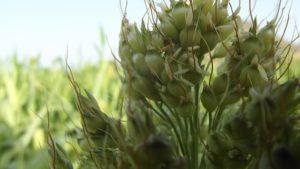APPLICATIONS OF TECHNOLOGY:
Lignocellulosic biomass conversion
BENEFITS:
- Less expensive route to synthesizing ILs
- Minimizes impurity formation and the need for IL purification
- When using choline-based ILs, the water produced during the synthesis does not need to be removed and is a component of the pretreatment solvent
- Minimizes IL losses due to transfer between vessels. Additionally, the biomass acts as a heat sink to absorb any energy released during the IL synthesis
- Avoids the use of organic solvents and reduces the formation of side products.
BACKGROUND:
Ionic liquids (ILs) and deep eutectic solvents (DESs) have been demonstrated to be effective solvents for the pretreatment of lignocellulose, reducing its recalcitrance to enzymatic hydrolysis. However, ILs and DESs contribute to the overall cost of a lignocellulosic conversion process, so methods to reduce their costs can have a great impact on the overall economics of a biorefinery.
TECHNOLOGY OVERVIEW:
Researchers at Berkeley Lab have developed a method to synthesize ILs/DESs in-situ that is considerably more cost-effective than existing approaches.
The invention eliminates the time-consuming and labor-intensive IL/DES synthesis process. Since this step is combined with biomass pretreatment, the IL/DES components are simply added directly to the biomass in the pretreatment vessel, and pretreatment proceeds as normal. The resulting biomass (post pretreatment) is just as easily hydrolyzed into fermentable sugars as when using pre-synthesized IL. For instance, biomass (sorghum) treated with the IL ethanolamine acetate ([Eth][OAc]) released ~300 mg/g biomass of sugars during enzymatic hydrolysis, which did not change significantly when the IL was synthesized in-situ or prior to addition to the reactor.
In an extension of this process, the IL/DES can also be synthesized using ions present within ensiled biomass. After pretreatment using the in-situ synthesized IL cholinium lactate/acetate, enzymatic saccharification of the biomass at 50 °C released ~90% of the maximum theoretical glucose from ensiled sorghum at 20% wt/wt loading.
This technology reduces the process cost significantly by obviating the need for the separate synthesis/purification of ILs/DESs and by using the organic acids (or other IL/DES precursors) at the application point.
DEVELOPMENT STAGE: Proven principle
PRINCIPAL INVESTIGATORS:
- Harsha D. Magurudeniya
- Ezinne Achinivu
- Blake A. Simmons
- John M. Gladden
STATUS: Patent pending.
OPPORTUNITIES: Available for licensing or collaborative research.
SEE THESE OTHER BERKELEY LAB TECHNOLOGIES IN THIS FIELD:
Switchable Ionic Liquids for Biomass Pretreatment and Enzymatic Hydrolysis 2014-064
Distillable Volatile Salt for Cost-effective Pretreatment of Biomass 2019-101
Tunable pH Ionic Liquids for Pretreatment of Lignocellulosic Materials 2015-096
Sugar Extraction and Ionic Liquid Recycling Using Alkaline Solutions EJIB-3117
